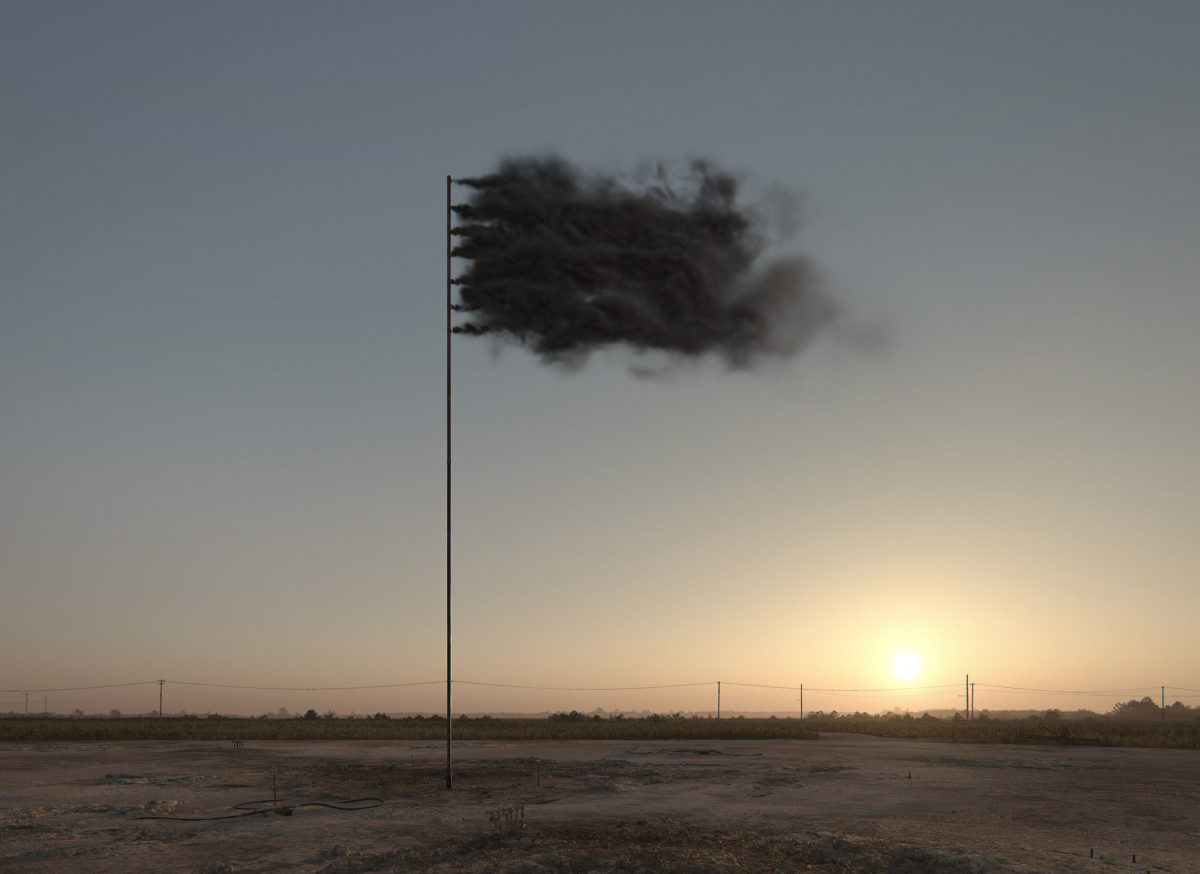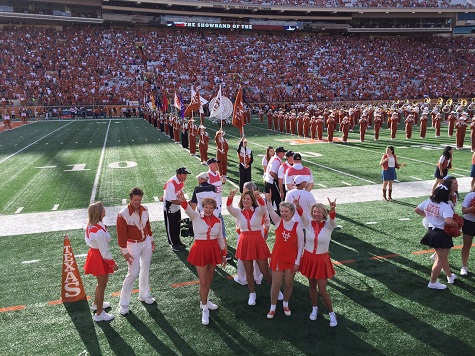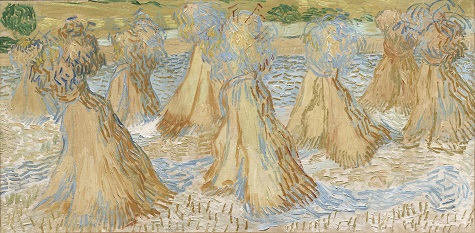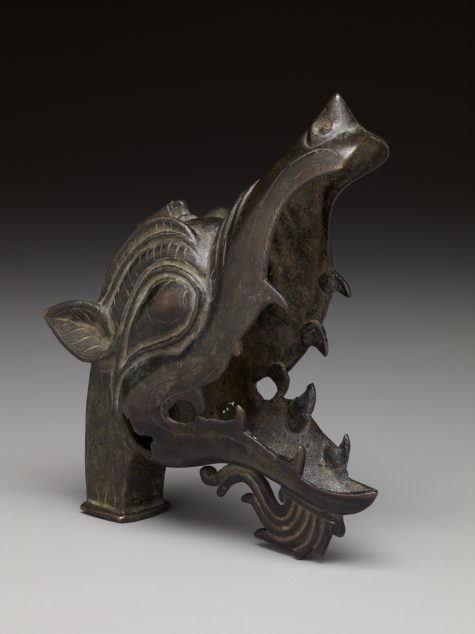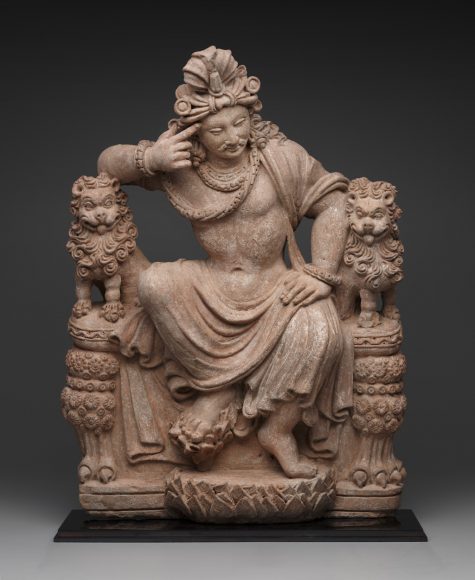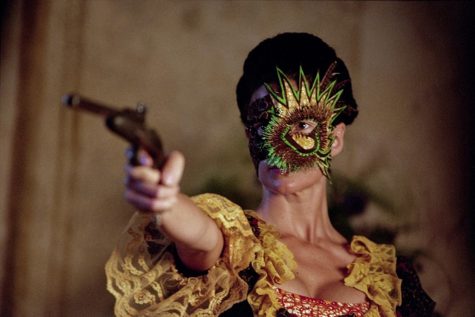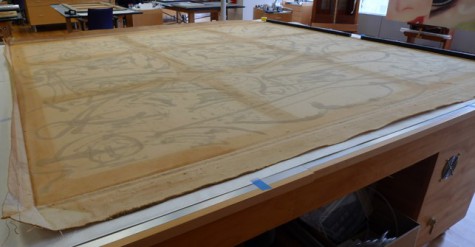We bid farewell to Edward Steichen’s In Exaltation of Flowers this week. The lavender walls and gold-leafed canvases will go off view on May 13 and the space will be prepped to hold a selection of newly acquired posters from the Guerrilla Girls Portfolio Compleat (opening May 26, more details provided in a future Uncrated post).
Fortunately, two new installations of contemporary art will open the same weekend the Steichen exhibition comes to a close. In the Stoffel Quadrant, eleven large sculptural works will adorn the walls and floor. Lynda Benglis’s Odalisque (Hey, Hey Frankenthaler), a colorful river of poured latex, is representative of the scale and non-traditional materials explored by this selection of artists. Elise Armani, the McDermott Intern for Contemporary Art, chose these works, all of which were created by women whose work resists the crisp geometries associated with the male-dominated Minimalist movement. Instead, Armani wants viewers to recognize the ways each piece interacts with its surrounding and raises questions about the relationship between works of art, physics, anatomy, and psychology. Contemporary culture, environmentalism, and daily routines are critiqued in works by Annette Lawrence and N.Dash. Lawrence draws attention to the proliferation of junk mail and wasted materials by transforming strips of paper into a wall relief. Dash’s blackened, folded paper sculpture is the result of her methodical handiwork aboard the New York subway.
Another group of works by women artists will be on view in the Stoffel Quadrant (formerly home to Yayoi Kusama’s Infinity Room). The installation, Soft Focus, will contain nearly thirty photographs drawn from the DMA’s permanent collection and local lenders. Some images, like Kunie Sugiura’s Central Park 3, broaden the traditional understanding of photography by relying on alternative applications of light sensitive materials. Also included will be an example of Diane Arbus’s iconic approach to portraiture. Other photographers whose works will be on view are women who participated in mainstream art movements but rarely received equal critical acclaim as their male counterparts.
images: Lynda Benglis, Odalisque (Hey, Hey Frankenthaler), 1969, poured pigmented latex, Dallas Museum of Art, TWO x TWO for AIDS and Art Fund, 2003.2 © Lynda Benglis / Licensed by VAGA, New York, NY; Annette Lawrence, Free Paper 12 / 05, 2006–2008, mixed media, Dallas Museum of Art, Charron and Peter Denker Contemporary Texas Art Fund 2008.100.A-E © Annette Lawrence; N. Dash, Commuter (New York, 2013), 2013, graphite and paper, Dallas Museum of Art, gift of Bonnie L. Pitman in honor of Deedie Rose and Catherine Rose 2016.63; Kunie Sugiura, Central Park 3, 1971, photo emulsion and acrylic on canvas, Dallas Museum of Art, Lay Family Acquisition Fund 2016.11.1; Diane Arbus, Untitled, 1968, gelatin silver print, Dallas Museum of Art, Polaroid Foundation grant 1975.82 © Estate of Diane Arbus
Emily Schiller is the Head of Interpretation at the DMA










